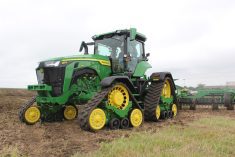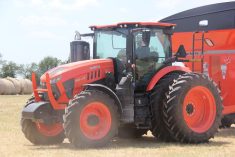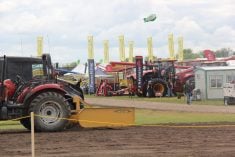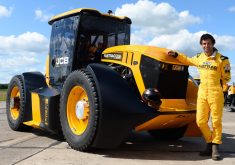When I first started writing about tractors and machinery, I was only looking at older machines, anything vintage, rare, unique or just plain interesting. Or perhaps more accurately stated, anything that was interesting to the editors I was supplying articles to, which meant almost anything old on Canadian farms. That’s because my first customers as a freelance writer were editors of British tractor magazines. Oddly enough it took me several years to end up writing for a Canadian publication.
So at first I spent all my time searching for older tractors that I could write about. I traveled a few miles over the years going to see unique machines. I managed to find some pretty rare ones, including the prototype for the original tracked Challenger 65. I spoke to the two engineers that led the development on it and got the full story of how that tracked tractor evolved. All of that turned into what I think was a really interesting article that was published, of course, in the UK.
Read Also
Movin’ On
Me, a little dusty after a long day of equipment field testing in Texas Aside from…
With the help of someone I met through those searches, Ray Bianchi, from Greater Toronto who has a terrific reference library on combines, we put together another great piece on the evolution of Massey Ferguson combines, which used to be built in Brantford, Ontario. That, too, ran in an overseas magazine.
I even wrote one book and contributed to two others on the topic of older tractors.
Eventually, however, John Morriss, the editorial director of FBC Publishing, which owns Grainews and Country Guide magazines, called me up and started offering me steady work for those publications. That meant my focus changed to writing about newer equipment, and that’s what I’ve mostly been up to for the last decade. Being busy at that meant I haven’t spent a lot of time with the classic and vintage machines, at least not as much as I used to.
An event this past weekend took me back a few years, as online editor Greg Berg and I ventured outside the city to see the Mennonite Heritage Village Tractor Trek. That annual event, which is in its 10th year running, saw 45 vintage tractors make a 50-kilometre trip through the Manitoba countryside.
Walking through a group of ‘40s to ‘70s classic tractors is kind of like seeing old friends again. I was raised around these machines, and their simplicity compared to modern marvels is kind of refreshing in a way.
The tractor collector hobby has waned a little over the last several years as the older generation that started it thins out. That means the value of restored or restorable older tractors has fallen. They’re pretty affordable now. Many can be picked up for the price of a set of high-end golf clubs.
I think having a classic tractor around to enter into events like the Tractor Trek and meet others who are interested in equipment makes it a very worthwhile investment.
Today’s large, modern tractors are far too big, complex and expensive to ever likely be part of the tractor restoration hobby, so the older machines will almost certainly be the only ones to see that kind of attention. And there’s just a kind of elegance in their simplicity and design that makes them enjoyable to operate and even just look at. Even if you didn’t grow up with these tractors, if you just have an interest in farm machines, they’re a pleasure to be around.

















